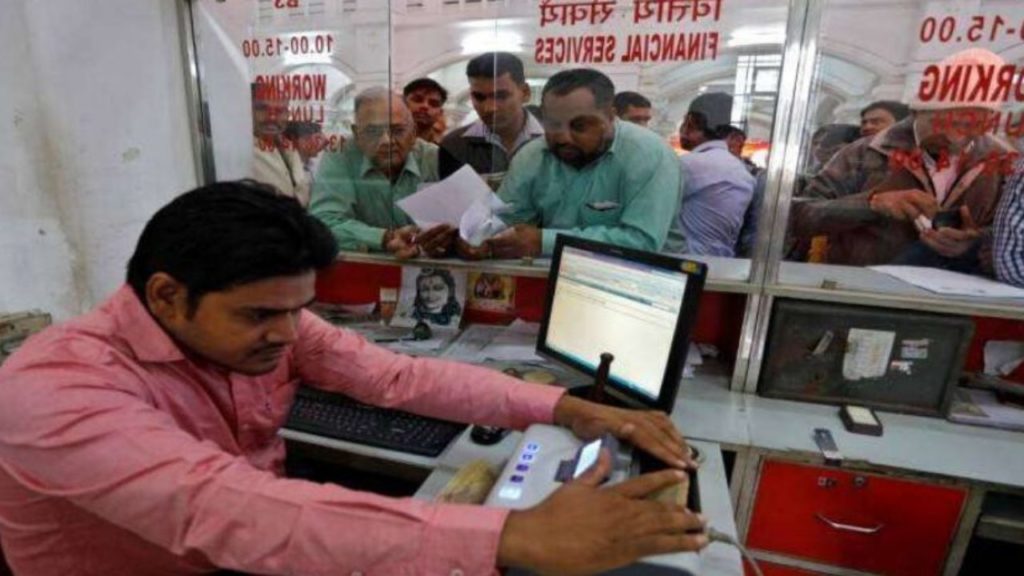Mega-Merger Of 10 PSU Banks Is Live, 6 Banks Cease To Exist; PNB Delays Some Aspects Due To Lockdown

On Wednesday, the biggest-ever consolidation exercise in the public sector banking space is slated to take shape when six PSU lenders will be merged into four in a bid to make them globally competitive.
Contents
Why Is This Significant?
Basically, the exercise assumes significance as it is taking place at a time when the entire country is under the grip of the COVID-19 outbreak, which has triggered a 21-day lockdown.
According to the experts, the merger at this point of time will not be very smooth and seamless. Although, the heads of the anchor banks exuded confidence.
What Does The Bank Say?
The Union Bank of India Managing Director, Rajkiran Rai G said “We don’t foresee any problem, it is going as per the plan. We have reviewed in the light of this situation also. Certain modifications in implementation we have done so that there is no disruption for employees and customers. We are ensuring zero disruption,”.
However, the four anchor banks — PNB, Canara Bank, Union Bank and Indian Bank are postponing some part of the implementation and processes due to the lockdown.
He said “For merging banks, we have not changed some of the processes like loan process etc, which we proposed to do earlier. However, because of the prevailing situation, we will be continuing the old system till the situation comes under control,”.
How Will This Merger Benefit The Bank?
According to Mr. Rai, with the merger, the bank looking at more than Rs 2,500 crore of synergy benefits in the next three years.
The Oriental Bank of Commerce and the United Bank of India will merge into Punjab National Bank (PNB); Syndicate Bank into Canara Bank; Andhra Bank and Corporation Bank into Union Bank of India; and Allahabad Bank into Indian Bank, as per the mega consolidation plan.
While talking on the subject, PNB MD, S S Mallikarjuna Rao said “We have planned very well and from tomorrow onwards we will ensure that the merged entity functions more efficiently and effectively. Particularly we would ensure that customer services remain uninterrupted,”.
Further, he said, the bank will be working very hard to create an edifice properly for enhancing the strength of the bank.
According to the consolidation, there will be seven large public sector banks (PSBs), and five smaller ones.
How Will This Merger Affect The Economy?
In 2017, there were as many as 27 PSBs. Next financial year, the total number of public sector banks in the country will come down from 18 to 12 beginning.
While talking on preparedness, Indian Bank MD Padmaja Chunduru said harmonization of products — both on the loan and deposit sides — has been completed and the same products will be offered to all customers.
Further, she said, all the deposit and loan products, including access to Indian Bank’s emergency credit lines launched in the wake of COVID-19 would be made available to the customers of Allahabad Bank.
“We have focused all our resources on the important things that matter for day one — treasury integration has happened and IT integration to the extent of product harmonization and rolling out of the same products has happened,” she added.
According to them, the entire IT integration will be completed by December 2020.
After this merger, PNB will become second largest after the State Bank of India (SBI), Canara Bank fourth, Union Bank of India fifth and Indian Bank seventh biggest public sector lender.
“We are delighted that following the amalgamation as a single legal entity, we will become a powerful banking institution that is globally competitive and efficient working towards providing differentiated customer experience excellence across all our products and services,” said, the Canara Bank MD, L V Prabhakar.
Prabhakar said, the combined entity will be large but with an unchanged approach to grass-root banking, customer delight, and satisfaction.
Also, the merger will result in the creation of seven large PSBs with scale and national reach, with each amalgamated entity having a business of over Rs 8 lakh crore.
Moreover, it would help create banks with scale comparable to global banks and capable of competing effectively in India and globally.
Additionally, the consolidation would provide impetus to the merged entities by increasing their ability to support larger ticket-size lending and have competitive operations by virtue of greater financial capacity.
Dena Bank and Vijaya Bank were merged with Bank of Baroda, last year.
The government had merged five associate banks of SBI and Bharatiya Mahila Bank with the public sector bank, prior to this.
Which included State Bank of Patiala, State Bank of Bikaner and Jaipur, State Bank of Mysore, State Bank of Travancore and State Bank of Hyderabad effective April 2017.

Comments are closed, but trackbacks and pingbacks are open.